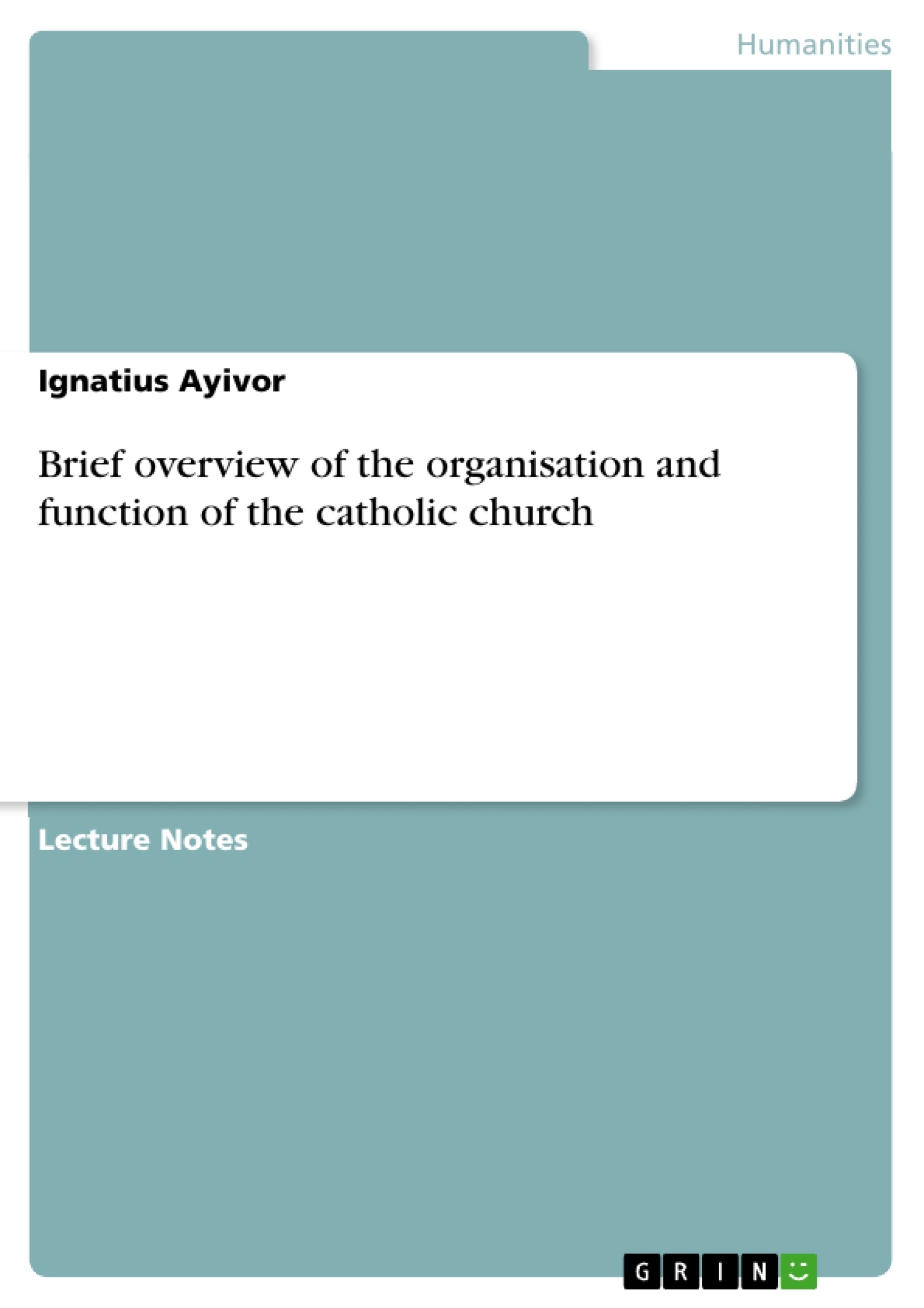This overview is about the issues in the catholic church. At first it covers a brief overview about the history of the first general council of nicea in 325. Then it gives information about the situation and the rights and obligations of catholic clergy. At the end it mentions the importance of youth involvement in the liturgical life of the catholic church.
Table of Contents
- BRIEF HISTORY OF THE FIRST GENERAL COUNCIL OF NICEA 325
- DATE AND VENUE
- ATTENDANCE
- AGENDA OF THE COUNCIL
- OTHER MATTERS
- CLOSURE
- BRIEF HISTORICAL SURVEY OF BEAUTIFICATION AND CANONIZATION OF SAINTS
- CATHOLICS DO NOT WORSHIP STATUES AND IMAGES
- INFANT BAPTISM
- IS THE CATHOLIC CHURCH A COMMUNION OF CHURCHES UNDER THE POPE?
- OBLIGATIONS AND RIGHTS OF THE LAITY IN THE CATHOLIC CHURCH
- RIGHTS AND OBLIGATIONS OF CATHOLIC CLERGY
- THE CARDINALS OF THE HOLY ROMAN CHURCH
- Roles and Functions
- Qualifications for Appointment as Cardinal
- Composition of College of Cardinals
- 7 Suburbicarian Sees of Rome
- Consistories where the collegial assistance given by the College of Cardinals to the Pope is ordinarily done
- 4 prerogatives of Cardinals
- Age of Retirement
- THE IMPORTANCE OF YOUTH INVOLVEMENT IN THE LITURGICAL LIFE OF THE CATHOLIC CHURCH
Objectives and Key Themes
This work aims to provide an overview of key aspects of the Catholic Church, from its history and doctrines to the roles of its clergy and laity.
- The historical significance of the First Council of Nicaea
- The process and meaning of beautification and canonization of saints within the Catholic Church
- The structure and authority of the Catholic Church, including the role of the Pope and the College of Cardinals
- The importance of youth involvement in the liturgical life of the Catholic Church
- The rights and obligations of both clergy and laity within the Catholic Church
Chapter Summaries
- BRIEF HISTORY OF THE FIRST GENERAL COUNCIL OF NICEA 325: This chapter details the first meeting of the Council of Nicaea, held in 325 AD. The chapter covers the date and venue of the council, the attendees, the agenda, and the key decisions made.
- BRIEF HISTORICAL SURVEY OF BEAUTIFICATION AND CANONIZATION OF SAINTS: This chapter delves into the history of beautification and canonization in the Catholic Church. It discusses the origins of these practices and examines the process of declaring someone a saint.
- CATHOLICS DO NOT WORSHIP STATUES AND IMAGES: This chapter clarifies the Catholic Church's position on the use of statues and images in worship, emphasizing that they are not objects of worship themselves but rather aids to devotion.
- INFANT BAPTISM: This chapter addresses the practice of infant baptism in the Catholic Church, outlining the theological and historical reasoning behind this practice.
- IS THE CATHOLIC CHURCH A COMMUNION OF CHURCHES UNDER THE POPE?: This chapter examines the structure and authority of the Catholic Church, exploring the concept of the Pope as head of the Church and the role of the College of Cardinals.
- OBLIGATIONS AND RIGHTS OF THE LAITY IN THE CATHOLIC CHURCH: This chapter outlines the rights and responsibilities of lay members of the Catholic Church, emphasizing their roles in the life of the Church.
- RIGHTS AND OBLIGATIONS OF CATHOLIC CLERGY: This chapter explores the duties and privileges of clergy within the Catholic Church, including priests, deacons, and bishops.
- THE CARDINALS OF THE HOLY ROMAN CHURCH: This chapter focuses on the role and function of the Cardinals within the Catholic Church, detailing their qualifications, responsibilities, and the structure of the College of Cardinals.
- THE IMPORTANCE OF YOUTH INVOLVEMENT IN THE LITURGICAL LIFE OF THE CATHOLIC CHURCH: This chapter highlights the importance of youth involvement in the liturgical life of the Catholic Church, advocating for their participation in the sacraments and religious practices.
Keywords
Key concepts explored in this work include the Council of Nicaea, Arianism, beautification, canonization, veneration of saints, the Catholic Church, the Pope, the College of Cardinals, clergy, laity, and the importance of youth involvement in the liturgical life of the Church.
- Citar trabajo
- Ignatius Ayivor (Autor), 2007, Brief overview of the organisation and function of the catholic church, Múnich, GRIN Verlag, https://www.grin.com/document/383648



